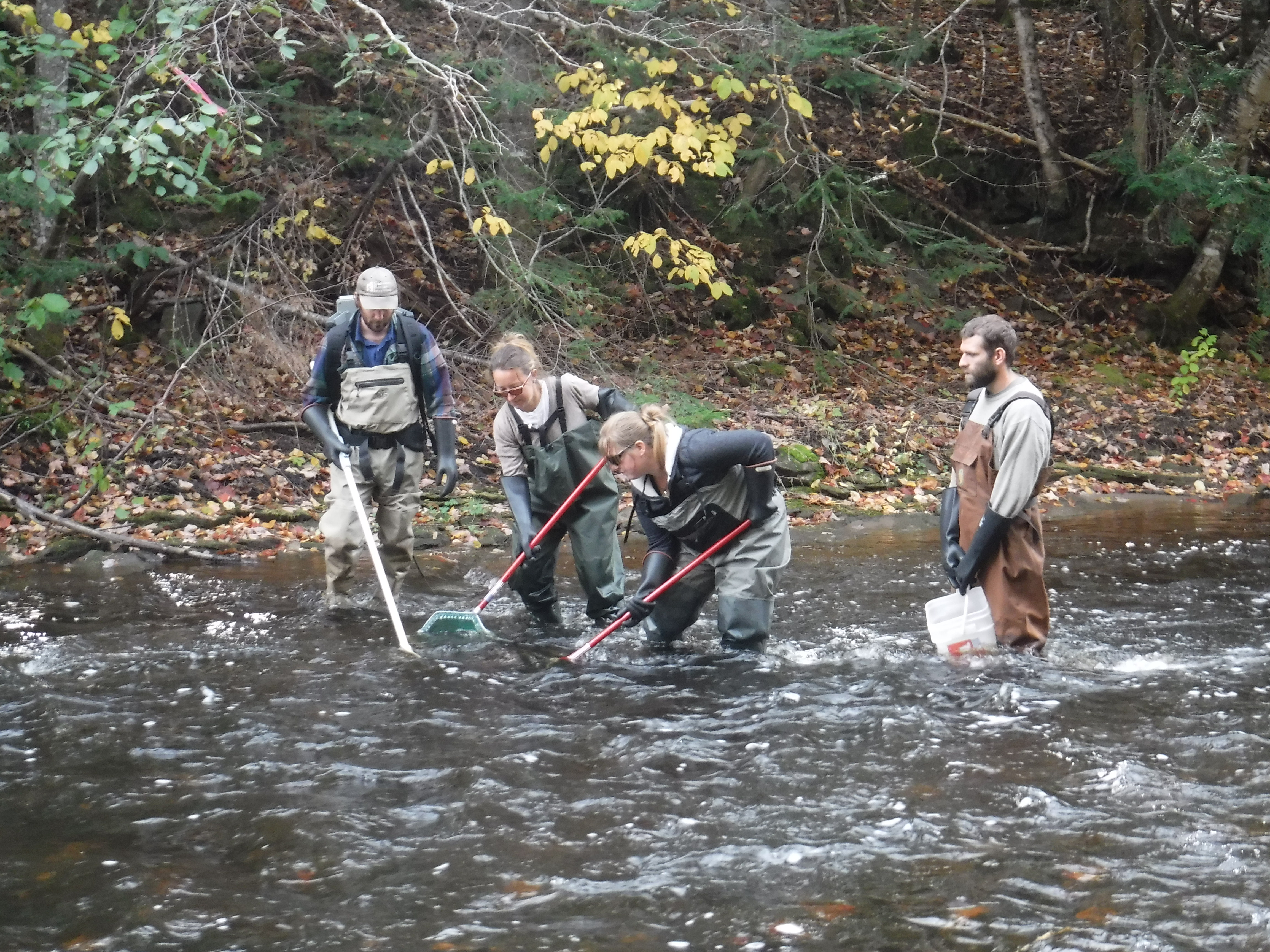L’Association du bassin versant de la baie de Shediac
septembre 7, 2017
Ni trop chaud, ni trop froid. L’Association du bassin versant de la baie de Shediac (ABVBS) met tout en œuvre afin de s’assurer que le bassin versant est un environnement confortable et accueillant pour le saumon atlantique.
Qu’elle effectue des évaluations de la population ou qu’elle travaille à l’amélioration de l’habitat du poisson, l’ABVBS vise un objectif. Faire de la baie de Shediac un écosystème regorgeant de saumon atlantique. L’association est aussi fière de pouvoir compter sur la Fondation pour la conservation du saumon atlantique comme partenaire afin de réaliser ses initiatives en matière de conservation.
Jocelyne Hébert, technicienne en environnement pour l’ABVBS, explique que de multiples études sont en cours dans le bassin versant de la baie de Shediac en vue d’améliorer la qualité de l’eau et l’habitat du poisson.
« En 2017, des évaluations seront effectuées dans les rivières afin d’identifier l’habitat de fraie du saumon, les sources de pollution, la sédimentation causant l’érosion, les blocages et les ponceaux qui causent des problèmes de fragmentation de l’habitat et nuisent au passage du poisson », explique-t-elle.
« Étant donné que la température de l’eau est critique pour le saumon, sept sondes de température ont été installées à divers endroits dans les rivières à saumon confirmées pour vérifier les fluctuations de température. Cet outil de surveillance de la température indique les lieux chauds et les zones froides du bassin versant. Il guidera les efforts de restauration, qu’il s’agisse de planter des arbres pour accroître la couverture de feuillage, ou d’améliorer la protection des sites froids précieux où le saumon peut migrer durant les périodes de stress thermique. »
Les projets de restauration de l’habitat du poisson en 2017, qui seront entrepris grâce en partie à une subvention de 10 000 $ de la Fondation pour la conservation du saumon atlantique, comprennent la restauration d’un secteur problématique dans la rivière Scoudouc, où les véhicules tout-terrain et autres véhicules hors route ont endommagé les berges près d’une fosse à saumon. La restauration consistera à stabiliser les berges érodées.
« De plus, l’ABVBS procède actuellement au nettoyage et à la stabilisation du ruisseau Cornwall, un affluent de la rivière Scoudouc, qui est affecté par une grave surcroissance d’aulnes et des embâcles de débris, auxquels s’ajoutent de graves problèmes d’érosion et de sédimentation.
Des activités d’électro-pêche ont lieu chaque année afin de mieux comprendre la dynamique et la répartition de la population dans le bassin versant de la baie de Shediac.
« En 2016, deux nouveaux sites de relevé ont été choisis en fonction des caractéristiques de l’habitat qui étaient censées être favorables pour le saumon. Cette initiative a donné des résultats intéressants. Les nouveaux sites dans le ruisseau Weisner et le ruisseau McQuade, affluents de la rivière de Shediac, contenaient 30 et 47 alevins et tacons respectivement. Aucun relevé effectué dans le bassin versant auparavant n’avait produit autant de saumons juvéniles, ce qui a suscité une grande joie et beaucoup d’enthousiasme au sein de l’équipe de l’ABVBS. »
Les relevés par électro-pêche seront poursuivis à l’automne de 2017. Un nouvel élément de l’évaluation de la population consistera en des relevés de dénombrement des nids de fraie, où l’équipe marchera le long des habitats de fraie à la recherche de nids de saumon. »
Mme Hébert fait remarquer qu’en effectuant des évaluations de l’habitat et de la population, l’ABVBS travaille à la réalisation de son objectif, qui est de repeupler le bassin versant en saumon pour rétablir la population qui agrémentait les cours d’eau autrefois.
« Même si elles sont petites, nos rivières sont importantes pour la survie à long terme du saumon atlantique. »
